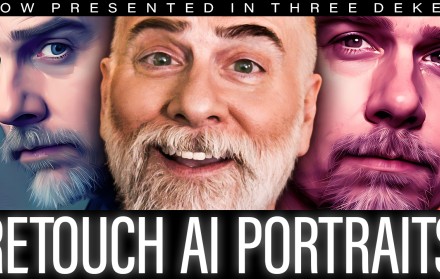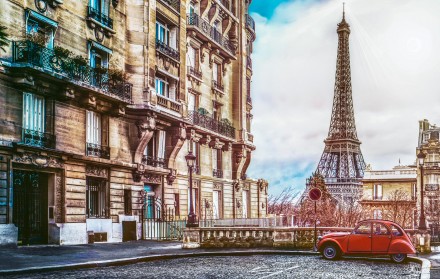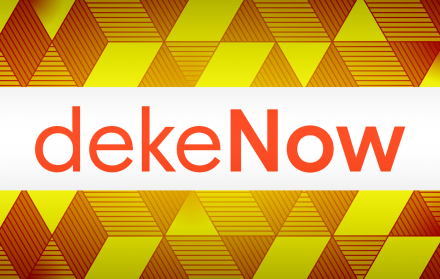If you live in The States, very likely the only thing on your mind today is the election. Apparently that holds true for me as well because I forgot to post today’s Deke’s Techniques last night. It’s my own thing and I spaced it. Oh, that Obama! What kinds of crazy antics will he get us into next?
Anyway, here it is. And here’s the official description from lynda.com:
In this week’s Deke’s Techniques, Deke McClelland shows you how to create punched-out 3D letters in Adobe Illustrator, turning the plain old word ‘good’ in the image below into something (arguably) even better.

Safety first: In order to keep the original type intact, Deke begins by making a copy of the layer to work on. After converting that copy to outlines, he also makes a copy of the outlines layer to work on. This way, the original type isn’t destroyed in the design process. Safety observed, Deke then removes the black fill and adds a 4pt white stroke, setting the stroke to align to the outside of the letters.

After converting the stroke to outlined fills, the type is ready for 3D extrusion. From the Effects menu, Deke chooses 3D > Extrude & Bevel, from which he sets the Z value to degrees and both the X and Y values to 4 degrees.

The next step involves some careful expansion, selection, and grouping, as well as the creation of a compound path from the letters in order to prepare them for a white fill (for the letters) and a red fill (for the extruded edges). By “careful,” I mean follow Deke’s instructions carefully here and you won’t go wrong. Cavalierly ignore certain aspects of Deke’s instructions, as I may have done, and you may go astray (as I may have done.)

After some housekeeping in the Layers panel (using the Reverse Order command to put the letters g-o-o-d in the right order), it’s time to do a little straightening of the letters themselves. The application of the 3D effect tends to misalign the letters and their edges a bit. Switching to the Outline mode (Command/Ctrl+Y) allows you to drag the paths back into alignment.

The next step is to take a Spirograph pattern from a few weeks back and duplicate it over each letter. (Check out this episode of Deke’s Techniques for more on how to create the Spirograph pattern.)

After pasting the Spirograph patterns in back of the letters, Deke creates a clipping mask for each letter/spirograph combination, eventually filling the inside of each character with the pattern.

After refilling the letters with red and adding a narrow stroke, it’s time for another round of alignment, which again is best done in Outline mode.

Lastly, a drop shadow, another stroke around the letter outlines, and the application of the Multiply blend mode provide the final touches to this sculptural effect:

Of course, this rich graphical 3D effect would not be the same without its fancy intertwined border. So next week, Deke will show you how to create that design using a pattern brush.
I really don’t have time for this. I live in a swing state, for God’s sake.



Be the first to drop some wisdom...